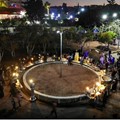International Asteroid Day
Why is International Asteroid Day celebrated?
In December 2016, the United Nations General Assembly adopted Resolution 71/90, declaring 30 June International Asteroid Day in order to “observe annually at the international level the anniversary of the Tunguska impact over Siberia, Russian Federation, on 30 June 1908, and to raise public awareness about the danger of asteroid impact.”
The International Asteroid Day was decided to raise public awareness about the danger of an asteroid impact and to inform the public about the necessary communications actions to be taken at the global level in the event of a credible threat near Earth.
The General Assembly's decision was taken on the basis of a proposal made by the Association of Space Explorers and endorsed by the Committee on the Peaceful Uses of Outer Space.
Basic information
Near Earth Objects (NEOs) represent potentially catastrophic threats to our planet. NEO is an asteroid or comet, which passes close to Earth's orbit. According to the NASA Center for Near-Earth Object Studies, there are more than 16,000 asteroids discovered near the planet Earth. The Tunguska asteroid event in Siberia, Russian Federation, on 30 June 1908 had the largest impact of any asteroid on Earth in recorded history.
On February 15, 2013, a large fireball (technically called a "superbolide"), at 18.6 kilometers per second, entered the atmosphere and disintegrated in the skies over Chelyabinsk. According to NASA, the asteroid has an approximate effective diameter of 18 meters and a mass of 11,000 tons. The approximate total impact energy of the Chelyabinsk Fireball, in kilotons of TNT explosives (the energy parameter normally transmitted for a fireball) was 440 kilotons. The Chelyabinsk event was a very large fireball, the most recognized active event since the 1908 Tunguska eruption in Russian Siberia.
The United Nations Office for Outer Space Affairs has worked on NEOs for many years and has recognized the danger of NEO impact as a global issue that demands an international response. Addressing such a risk, including identifying those objects that pose a threat to impact, planning a corresponding mitigation campaign, and taking collaborative actions in the interest of public safety on the part of the global community.
Based on the recommendations regarding the international response to the threat of impact on Earth from near-Earth objects, endorsed by the Committee on the Peaceful Uses of Outer Space in 2013, the International Asteroid Warning Network and the Space Mission Planning Advisory Group in 2014.
The International Asteroid Warning Network uses well-defined plans and communication protocols to assist governments in analyzing the potential consequences of an asteroid impact and to support the planning of resulting mitigation responses.
The Space Mission Planning Advisory Group is a space interagency forum that identifies technologies for NEO deflection, and aims to build consensus on recommendations for planetary defense measures.
International Asteroid Day_30 June_2022.
Organization_dream_development.






